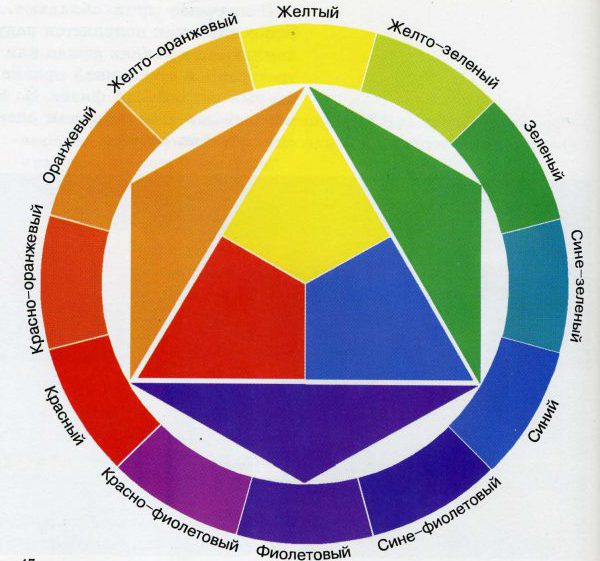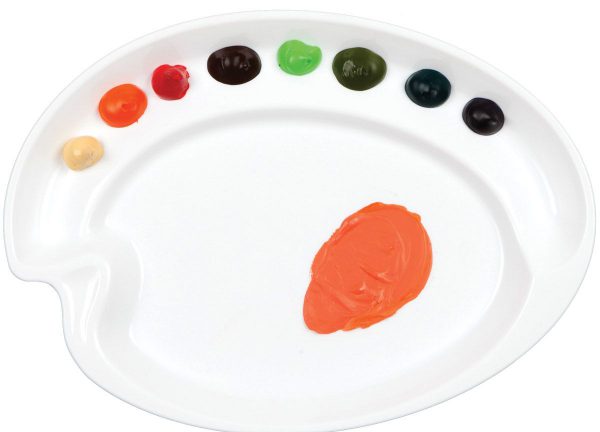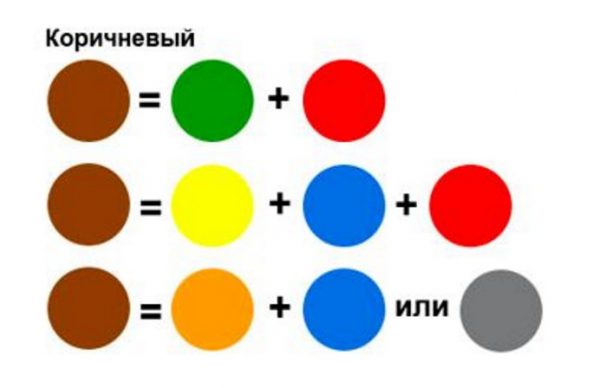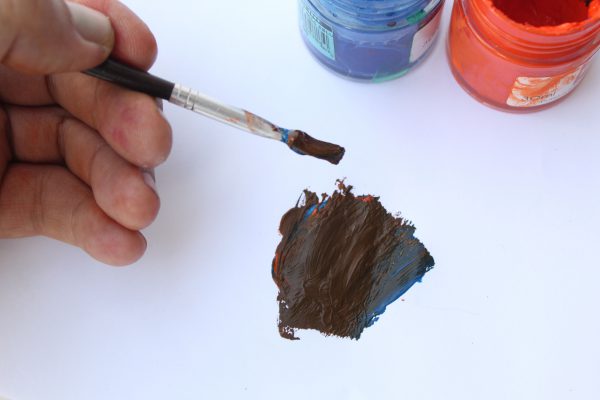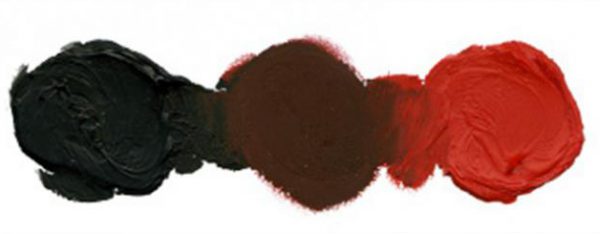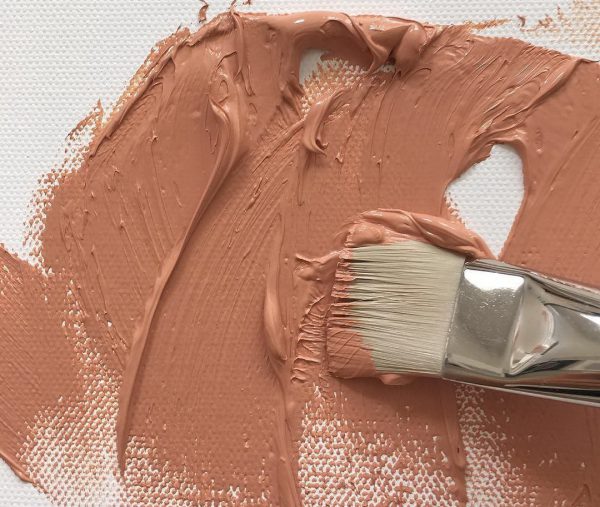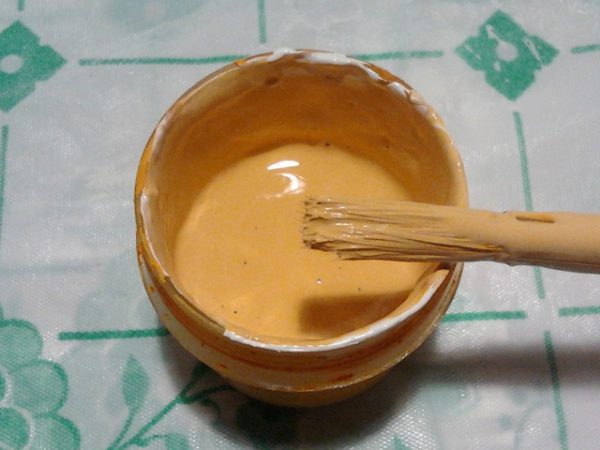For beginning artists, the question may arise how to get a brown color, because it is far from always in the gouache set. This tone is not included in the main group and can be obtained from a mixture of the latter. But the wrong approach to combining paints often leads to a gray mass or the wrong shade that was originally required. To create a paint that does not differ from the store, you need to know the tricks of color.
- Tone Mixing Rules
- What colors make brown
- Using primary colors
- Green with red
- Orange with blue
- Purple with yellow
- Additional methods
- Getting a dark brown color
- Light brown color
- Medium brown
- Red brown tint
- Tan color
- Shades of brown - table
- Tips & Tricks
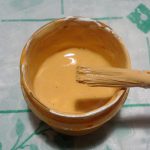
Tone Mixing Rules
All information about the compatibility of colors and features of the combination of colors combined science color. It is based on a color wheel with a variety of tones and their subtypes. There are three basic colors - red, yellow and blue. White and black stand apart, although they do not belong to the basic ones. All other tones can be obtained with mixing paints, because they are called secondary (green, purple, orange, blue, etc.).
There are basic laws for mixing dyes:
- all shades are divided into chromatic (color) and achromatic (white, black, gray), the first differ in color tone, lightness, saturation;
- when mixing two colors located on the chord of the color wheel, an intermediate tone will be obtained;
- when two opposite colors are combined from a circle, a different achromatic shade is obtained;
- you can mix paints mechanically (mix colors from two tubes) and optically (apply smears to each other).
You can combine gouache, acrylic, watercolor, water emulsion, oil, construction paints on a white palette - this is how the finished shade is seen in detail. If there is no palette, use a white earthenware plate, in extreme cases - white disposable (plastic) dishes or paper.
to contents ↑What colors make brown
You can even make brown from plasticine, ink from felt-tip pens, but the best result will be achieved using gouache. To create brown paint, you need to prepare yellow, blue, red, green, black and white - their various combinations will participate in obtaining a new tone.
to contents ↑There are several methods that allow you to make the desired color from other paints. It is necessary to take classic, pure tones without impurities. There are several options - the main, three-color and intermediate, as well as artists are aware of a number of additional techniques for creating brown.
Using primary colors
This method is the easiest, it only requires accuracy and high-quality colors.
Green with red
Even schoolchildren from drawing lessons know that brown will turn out if you add red to green. When green is not available, yellow and blue can be mixed together. The latter are taken in equal proportions to create a "classic" green tone, although individual desires can be taken into account. To get a more transparent brown, you can take a little more yellow.
to contents ↑It is important to enter red color in green, but not vice versa. Add it dropwise so as not to spoil the new tone, turning it into a taupe, rusty or brick. The main thing here will be green, but red makes the brown tone warmer.
Orange with blue
First you need to make a bright orange color (if it is not ready-made). To do this, take red, little by little add yellow to it. The amount of yellow should not be large, 10-15% of the total mass of the final color is enough. The final shade should be dark orange, a light tone is not suitable for making brown.
Next, blue paint is added to orange - about 7% of the total. After the introduction of each droplet, the color is well mixed, adjusting the saturation of the brown.
to contents ↑Purple with yellow
An intermediate way to obtain brown involves creating a purple color and combining it with yellow. At first, they take equally red and blue tint. As a result of their mixing, noble purple is obtained. Then they begin to add a little yellow color, which will lighten the violet. Brown in this case will not be dark, but it will have a warm, pleasant glow. Adding new portions of purple acts in the opposite way - it “cools” the shade. When using this technique, the introduction of a large volume of yellow paint allows you to get the color of ocher.
to contents ↑Additional methods
The combination of dark gray with orange also gives a brown color, however, it will remain cold even with the introduction of an increased amount of orange. Brown is also obtained by mixing green, purple and orange, however, such a multi-stage technique is complicated.
Getting a dark brown color
In any of these options, the introduction of additional portions of dark color helps to get a dark brown tone. We are talking about blue, green and purple colors. Nevertheless, the shades of brown will be different, because each component contributes to their creation.
There is another simple way to get a dark brown color from acrylic, oil or any other paints. A little black paint is dripped into the finished brown. But you need to work with it with extreme caution, otherwise the color will turn dirty black. At first, professionals mix black with a small amount of white, and then cook brown on its basis. So black will be softer, give a more pleasant dark brown tone.
Dark chocolate color can be obtained as follows:
- combine yellow and blue to get dark green;
- mix red and a little yellow separately to make orange;
- mix dark green and a drop of orange until a grass color is obtained;
- ready-made herbal color to mix with red, getting chocolate;
- to make dark chocolate add a drop of black paint.
White is added for milky chocolate, yellow for golden chocolate.
to contents ↑Light brown color
A light brown tone is easy to make by diluting a plain brown with white paint. The more intense the whitening, the brighter the color. It is important not to overdo it, because brown is a warm shade, and white “cools” it. Usually 1-5% of the total weight of the ink is enough to achieve a sufficient degree of lightening. You can also get a light brown if you initially add more yellow, although it is quite difficult to calculate the proportions so accurately.
to contents ↑Medium brown
To obtain a medium brown intensity, mix yellow, blue in equal parts, then add 20% red by weight of the mixture. Next, adjust the shade depth by adding black or white - depending on the need.
Red brown tint
The secret to creating brown with a glow of red is the introduction of more red tint into it. When you add it to green, first get the usual brown, then bring to the desired shade. The intensity will depend on the volume of the tint. In addition, the desired color is created by mixing red, blue and yellow. The easiest way to “tint” brown is to add a drop of red to the finished brown tint.
to contents ↑Tan color
This shade is made by combining orange and blue, followed by the addition of black paint. Also, a grayish or coffee color is obtained by mixing violet (magenta) and orange with the introduction of black.
Shades of brown - table
Below are the data on the colors that must be mixed together to obtain brown, as well as their approximate proportions:
| Hue | Mix colors | Proportions | ||
|---|---|---|---|---|
| Medium brown | Blue | Red | Yellow | 100:100:5 |
| Light brown | Green | Red | White | 100:5:5 |
| Dark brown | Purple | Yellow | The black | 100:10:5 |
| Chocolate | Dark green (grass) | Orange | Red | 100:50:40 |
| Coffee | Orange | Blue | The black | 100:50:10 |
Tips & Tricks
Artists advise buying a ready-made brown, if there is any doubt about the quality of mixing paints with your own hands. For example, when working with acrylic, problems may arise when applied to a canvas or clothes - on the canvas, the color will look different depending on the manufacturer and the specific components in the composition.
It is also better to tint in the store, if you have to paint a large volume of walls in the house - it is almost impossible to get a second portion of the exact same paint without special equipment. In other situations, do not be afraid of experiments and create new colors yourself - this will allow you to fully express your imagination!

